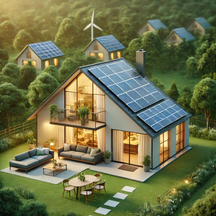Posted by Bobby on May 13, 2024
Empowering Your Off-Grid Living: A Comprehensive Guide to Efficiently Sizing Your Solar Generator
In this modern age it’s not only possible to have a completely off-grid home, it can also be very practical. And depending on your area, if it’s not practical yet, it will be soon. So to remain aligned with our mission of providing innovative, independent, and sustainable power in every home and business on earth, we’d like to give you a few tips:
Why go off-grid?
- It’s faster and less expensive: If you’re considering building a new structure or moving to a property that doesn’t have electricity, off-grid could be a lot less expensive than getting with the utility company to run power lines. Plus, using RevoPower products to DIY your own solar installation is almost guaranteed to be faster than the utility company.
- It’s independent: Once you have an off-grid system, you never have to worry about losing power again. Although it may be more effort and expense in the beginning, it will be a great feeling to still have power during storms and other outages.
- It’s better for the environment: A lot of power companies claim they have “100% renewable” plans. But how many trucks does that company have on the road? And how many employees do they have that drive to work every day? What about all the utility lines they have to run and all the logistics and equipment required for it?
Renewable isn’t the same as sustainable. While renewable energy is a step in the right direction, it still isn’t good enough. In order to reverse climate change and bring our earth back to the way it was given to us, we need to think sustainably.
- Make profit when you get a grid connection. If you plan to get a grid connection later, you can easily sell your excess solar power back to the grid (or at least reduce your electric bill) AND you’ll still have your off-grid battery backup system.
Ok, how much will it cost?
It depends on how much energy you use and how much you want to store. Check your latest energy bill to find your monthly energy use.
| Monthly energy use: | Battery storage: | DIY price estimate
(includes Rebel Solar Generator, batteries and solar panels): |
| 500 kWh | 24 hours | $19,500 |
| 500 kWh | 12 hours | $12,250 |
It’s way too expensive. How can we cut the price in half, at least?
- Sustainability starts with an efficient home. The more efficient your home is, the less electricity you’ll need, thus, a less expensive off-grid system. Here are some sustainability tips, ranked from the most electricity saving to least. When designing your home:
- Heating and cooling HVAC: Heat pumps should be considered in cold climates. Insist on a higher SEER rating for your air conditioner. A 3 ton air conditioner with a 14 SEER rating typically uses 61.7 kWh per day. A 3 ton air conditioner with a 25 SEER rating typically uses 34.6 kWh per day (almost half!) The efficiency gains in a higher SEER rating for your air conditioner can be extremely cost effective compared to the cost of solar panels and batteries.
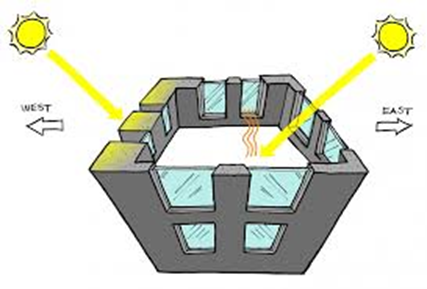
- Windows: Window location in your building or home can affect the indoor temperature dramatically. Windows on east and west walls of the home will heat up those rooms depending on the time of day due to the location of the sun. This can be advantageous in cooler climates but in hot climates it can be an extreme waste of electricity because of the extra air conditioning required.
- Insulation:
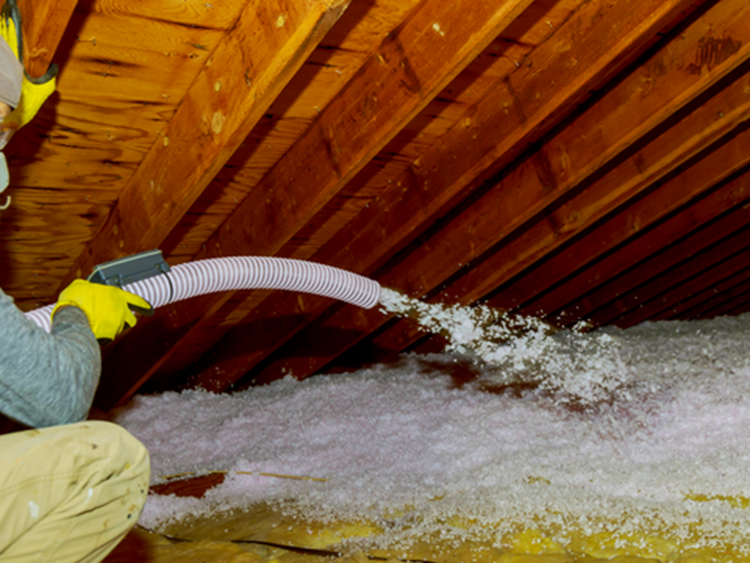
When considering off-grid wind/solar for your home, adding more or better insulation will almost always save you money. Insulation is much less expensive than solar panels and batteries, so be sure to add 10-14 inches of insulation in your attic and all exterior walls. Upgrading to the most efficient (best R-value) will also be cost effective.
- Consider the layout:
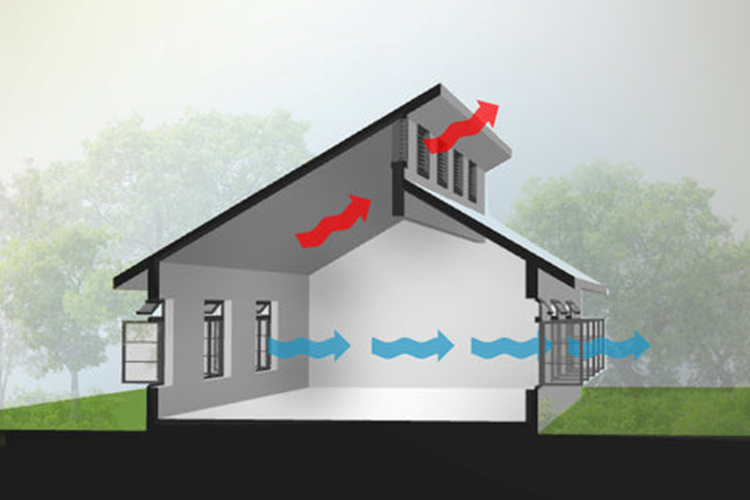
Which way does the wind typically flow in your area? If your building is rectangular shaped, aligning it parallel to the wind flow will make the most of the earth’s natural ventilation breeze. Some days our off-grid energy can get low. For example, when a storm rolls through and doesn’t provide much sunlight for a week. Or on extremely hot days when we need to run the air conditioning a lot. On warm days without electric air conditioning, being able to open the front and back doors of your home or building, and having the wind blow through the entire building, can make a huge difference.
- Trees: Trees are not good for solar panels or wind turbines. It’s recommended to place your building in the least shaded area of your property.
- Hot water:

There are many hot water systems that are very simple and less expensive than typical American electric or gas water heaters. Solar (a coil of black hoses inside a glass enclosure mounted on your roof) or geothermal hot water systems can cost almost nothing, especially if you do it yourself.
- Natural gas: While natural gas appliances can be less expensive to run, they are not as good for the environment and not as dependable in emergency situations as off-grid electric appliances.
When retrofitting your home:
- Windows: If you’re in a sunny and/or hot climate, consider tinting your home’s windows. This can have a dramatic effect on your cooling electricity needs and it’s almost certain it will be less expensive than solar panels and batteries. If you’re in a colder climate, consider installing window insulation (basically a big clear sticker that keeps heat inside your home).
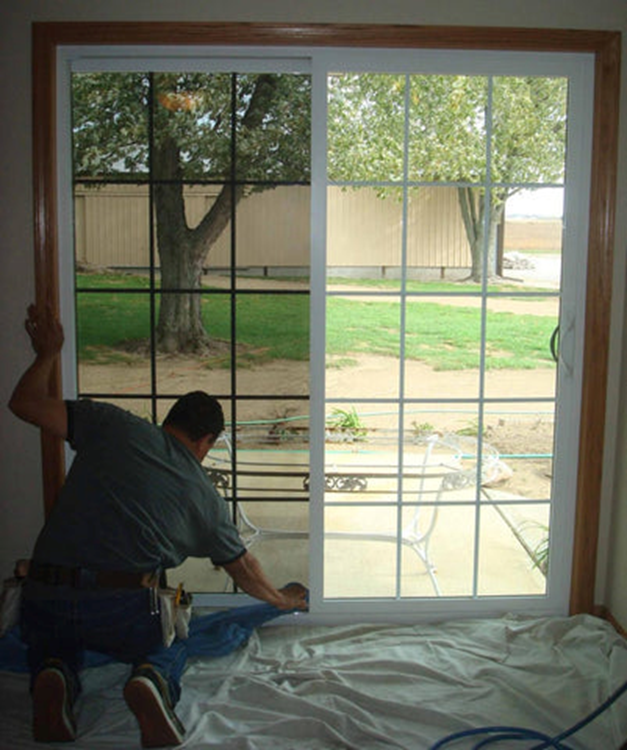
- Doors:
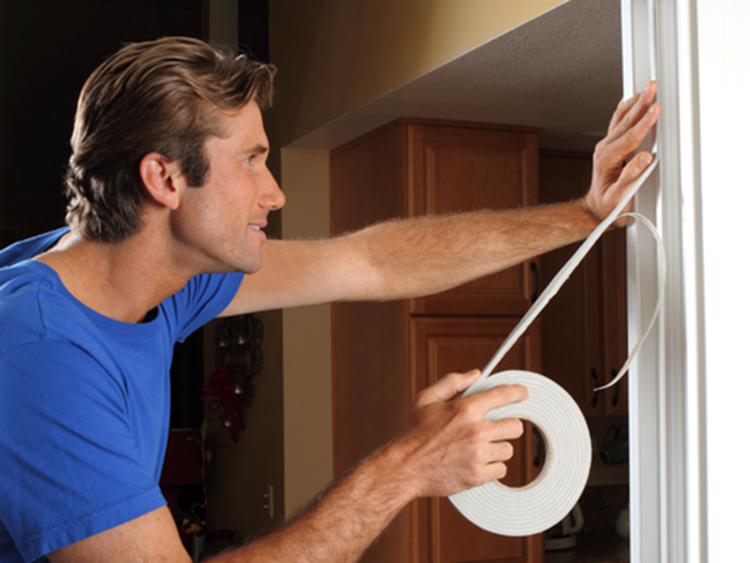
The biggest heating and cooling efficiency gains can be found in your door and window weatherstripping. Often times the weatherstripping wears out and just needs to be replaced.
- Insulation: Adding more insulation to your home may be possible and the efficiency gains almost always outweigh the price of solar panels and batteries.
- LEDs: LED bulbs can save a tremendous amount of electricity compared to incandescent bulbs. (A 60W incandescent = 10W LED bulb). LEDs have come a long way in the past decade. Now you can choose the color you like (warm yellow/orange, pure white, or cold blue-ish) and they’ve eliminated the flicker issues of the older bulbs. Products like Philips Hue smart bulbs are energy efficient and turn off automatically based on motion or a schedule.
Those modifications to your design or existing building can easily cut the price of an off-grid system in half.
It’s important to note that I didn’t consider “downsizing” in any of the above items. That’s because RevoPower believes that sustainability doesn’t have to be paired with sacrifice. Setting the thermostat to an uncomfortable temperature, constantly turning off all the lights, unplugging devices when you’re done using them – you don’t need to make these sacrifices just to save power, and often times these sacrifices make a negligible difference. If you can learn a little bit about off-grid systems and do some very easy DIY projects, you can have all the electricity you need – with extra to spare.
When choosing your off-grid system:
- There is almost no advantage in hiring a company to install your system for you. If you can learn about your setup, you will know how to fix it or improve it. Off-grid power can be an iterative process. (For example, starting with not enough batteries. Then you add batteries and now you don’t have enough solar panels. Then you add solar panels and you’re back to not enough batteries.) Being able to build your system through this iterative process will save you the most money. Otherwise, you’ll force the installation company to guess your power needs – resulting in an oversized system that costs more, or an undersized system that doesn’t perform.
RevoPower provides turn-key wind and solar systems that are plug and play. Almost all of our designs are custom and we love designing around your specifications!
- Start small! It might not sound like something a manufacturer would recommend, but we recommend under sizing your renewable energy system in the beginning. That way you can add batteries and solar panels as you go. If you try to guess your power needs, you may guess wrong or end up sizing a system that’s more expensive than it needs to be. RevoPower solar generators can always be easily upgraded later. (Solar panels and batteries can be added later. The inverter cannot be changed later).
- Use our free calculators to determine how many solar panels and batteries you need. Even if you don’t order from us, you can still use our calculators to come up with a rough estimate of what you’ll need.
After choosing your off-grid system:
- Install a soft-start on your air conditioner. Air conditioners can be hard to start with any kind of generator. A soft-start will enable your solar generator to start the A/C even when your battery is low.
- Install a transfer switch or generator interlock. If you have a grid connection, a transfer switch allows you to decide which circuits to run from the grid and which to run off-grid. This can be very useful during brown outs or power outages.
- Consider an EZ Array from RevoPower. DIY installing your own solar panels on a ground mount system is more cost effective than having someone else do it, and it’s as simple as installing metal fence posts. A ground mount solar panel system means no holes in your roof, and you don’t have to remove panels when your roof is replaced. Keep in mind all of these products qualify for tax credits from the US Government and they add value to your home when it's time to sell it.
I hope this helps and please let us know if you have any questions or comments about sizing a whole-home off-grid solar generator!

